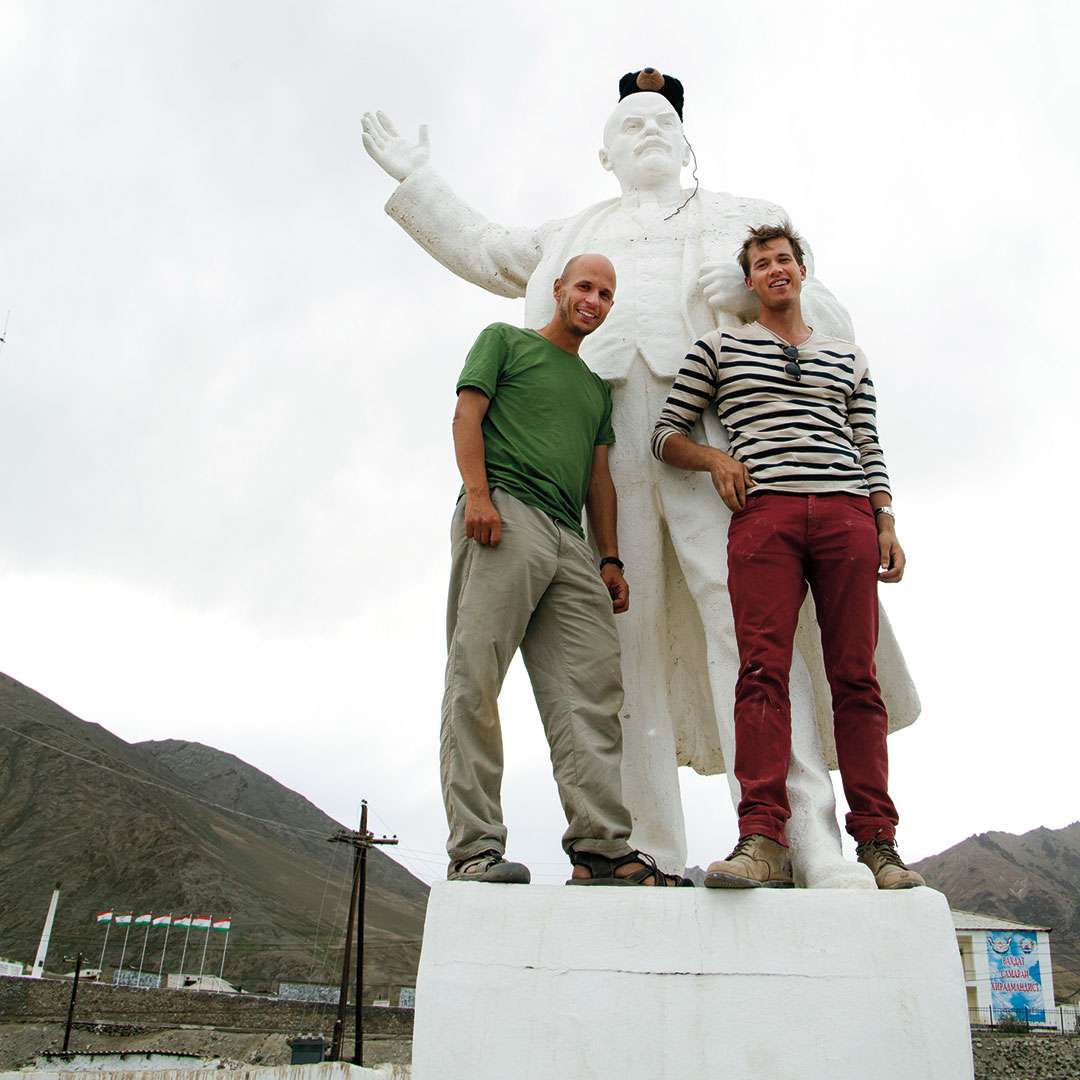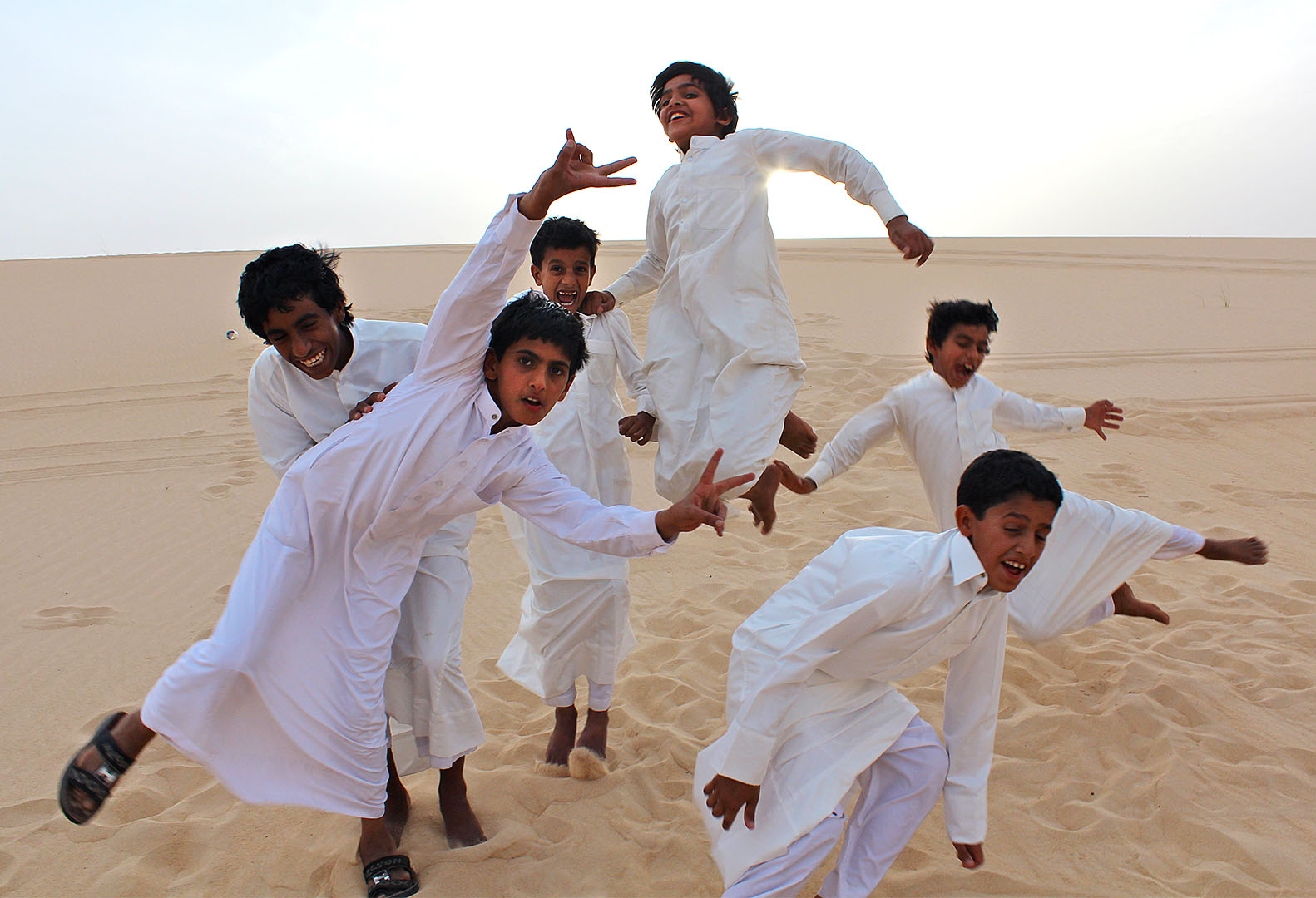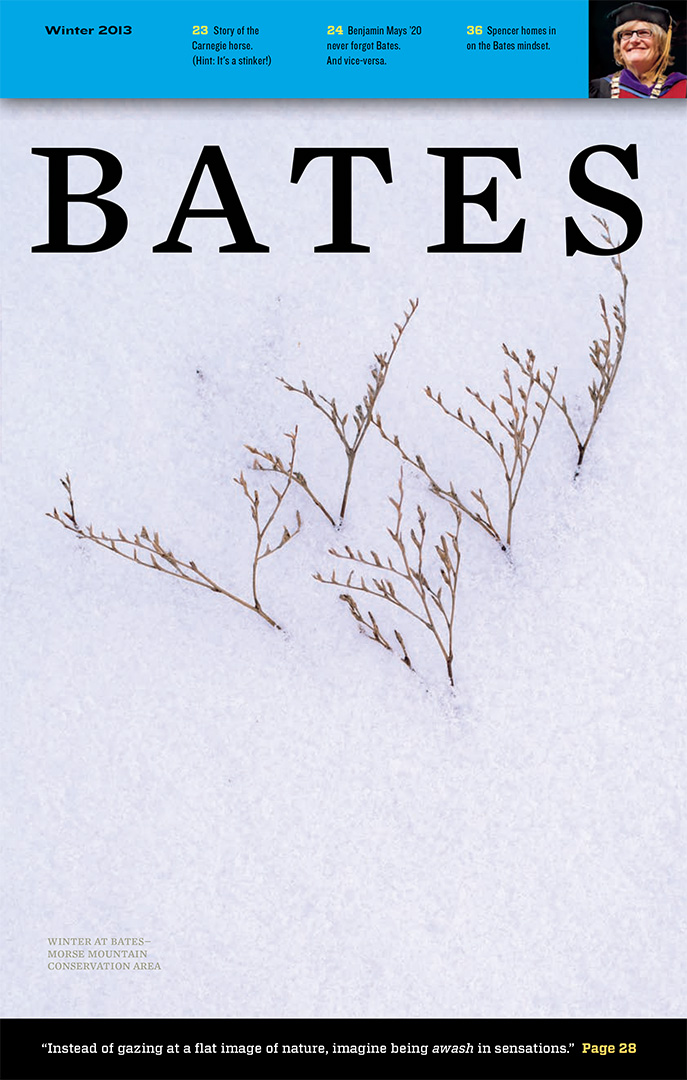
The trapeze gives flight to Travis Jones’ senior theses in theater and art
The Daring Young Man
By Victoria Stanton
Photographs by Phyllis Graber Jensen
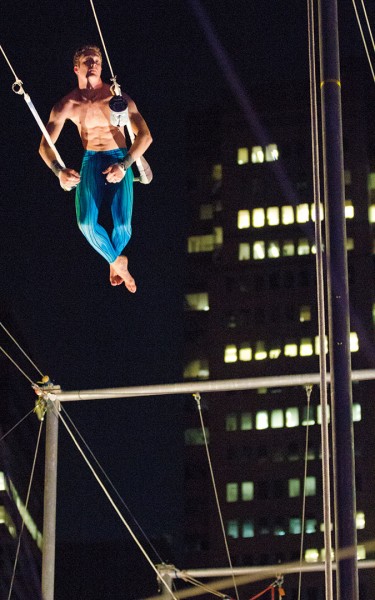
At the apogee of an upswing, Jones is poised to catch the next student flying his way at the South Street Seaport location of the Trapeze School New York.
Photograph by Phyllis Graber Jensen
Last summer, Travis Jones ’13 took a flying leap into the process of independent research.
He arrived in New York City ready to study the High Line, an elevated railway turned public park on Manhattan’s West Side, for his senior thesis in art and visual culture with Whitehouse Professor Erica Rand.
But his second senior thesis, in theater, had yet to come into focus. Jones wanted to deepen his interest in architecture with an exploration of how different theater spaces affect performance.
And this is where Jones’ expertise on the flying trapeze entered the scene. Three years ago, Jones, who is a diver for the Bobcat swim team, “got hooked” on trapeze after taking classes at Manhattan’s Trapeze School New York. A quick study, he was soon invited to become an instructor, an offer he took up last summer.
While watching the aerial feats of his TSNY colleagues, he realized that the circus would be the perfect genre to help him focus his investigation of space and performance.
While most Americans have a “big top” notion of all things circus, Jones explains that today’s circus venues “don’t really have a stereotypical look.”
Taking advantage of New York’s status as a mecca for the weird and wonderful, Jones attended a variety of performances, including Cirque du Soleil at Radio City Music Hall and Spiegelworld in Times Square.
While the acts in each show were similar, Jones discovered that his experience was drastically affected by his proximity to the performers and his viewing angle. “I’m interested in finding out what aspects of the venue influenced my feelings” about the performance, he says.
Jones’ theater adviser, Charles A. Dana Professor of Theater Martin Andrucki, originally suggested that his advisee look at architecture and performance, but Jones took the idea to new heights.
“That’s exactly the kind of response an adviser likes to see in a student,” says Andrucki, “picking up a hint and running with it in an inventive and creative direction.”
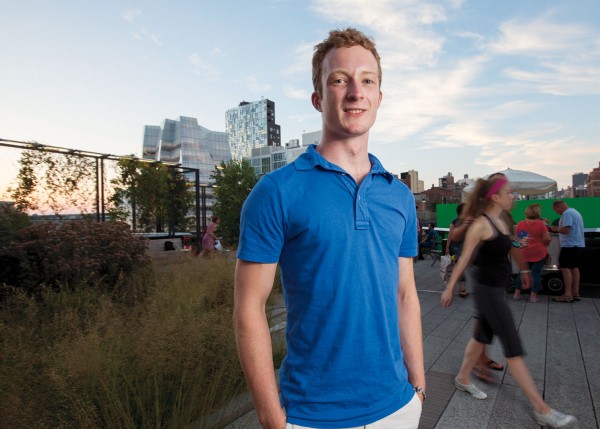
Jones at the High Line, a former freight rail line that’s now a public park elevated above the streets on Manhattan’s West Side.
Photograph by Phyllis Graber Jensen
As far as the relationship between his High Line thesis and circus-venue thesis goes, Jones, who is a native of Ithaca, N.Y., suggests that they are both about architectural spaces and “how people interact with those spaces and how the elements of design impact the audience experience.”
Over the summer, Jones also noticed how his research made him spacey, in a different sense of the word.
“I learned as much about how I interact with my immediate space — like how I behaved in my apartment — as I did about how other people engage with the spaces I’m studying.”
